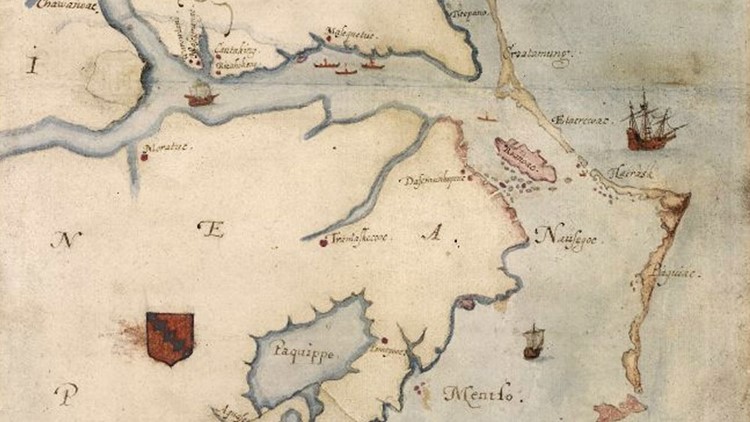MANTEO, N.C. — Archaeologists say an unearthed copper earring likely came from European explorers who made up part of the "Lost Colony" in modern-day Roanoke Island, North Carolina.
The nonprofit First Colony Foundation said the earring was likely traded or gifted to local Native Americans between 1584 and 1585. According to the foundation, an analysis conducted by Madison Accelerator Laboratory at James Madison University found that the copper used to make the ring was of European origin, rather than from a North American source.
The foundation said neither the French nor Spanish -- England's rivals in exploring the New World -- ventured as far north as Roanoke Island to trade.
Archaeologists found the earring at Roanoke Island's Elizabethan Gardens.
"This is an amazing find, with an intriguing story to tell,” said Eric Klingelhofer, First Colony Foundation’s vice president for research, in a news release. “After laying hidden in the ground for more than four centuries, this piece of copper now confirms that we have indeed located the site of Roanoac, the Algonquian village that welcomed the first English explorers in 1584.”
The First Colony Foundation said at that time, the wife of the village chief treated English explorers Philip Amadas and Arthur Barlowe to a lavish woodland feast.
“We were entertained with all love and kindness,” Barlowe wrote in his journal, “and with as much bounty, after their manner, as they could possibly devise.”
"Which makes you wonder, was their hospitality later repaid with a gift of this copper earring, jewelry to adorn a chieftain’s wife or her ladies?" Klingelhofer asked. "There’s no way to be sure, of course, but it’s an intriguing possibility, isn’t it?"
Roanoac village was abandoned in 1586, so the earring must have been presented as a gift or exchanged in trade before then. The foundation believes it would have been either during the 1584 visit by Amadas and Barlowe or the 1585 military outpost under Ralph Lane.
Sir Walter Raleigh’s final effort, the 1587 civilian settlement led by John White, would have been too late. That settlement would later be abandoned and become known as the "Lost Colony", its fate remaining a mystery to this day.



